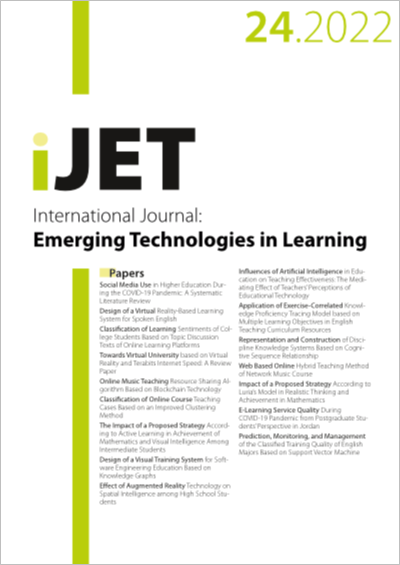Effect of Augmented Reality Technology on Spatial Intelligence among High School Students
DOI:
https://doi.org/10.3991/ijet.v17i24.35977Keywords:
Augmented Reality (AR); Spatial Intelligence (SI); Mathematics; High school.Abstract
Spatial Intelligence is a mental ability to understand and solve real-world problems. These visual-spatial representations are fundamental in learning various "STEM" topics, like digital drawing, art presentations, creating graphical representations, 2D designs. Opportunity to interact with real and/or virtual objects. It is a good opportunity in applying new techniques such as the augmenter, which is able to clarify mathematical tables, concepts and generalizations greatly to the visualization, understanding and mastery of concepts mathematically. The purpose of the research is to investigate impact of using AR technology in developing spatial intelligence for secondary school students, Baghdad. The quasi-experimental design was used, the participants consisted of (60) students of 4th class scientific in mathematics. Tools used where a spatial intelligence scale was prepared and contains three skills that include (20) questions. Research findings show that AR technology has a positive on spatial intelligence in mathematics, and concluded with a set of recommendations and proposals.
Downloads
Published
How to Cite
Issue
Section
License
Copyright (c) 2022 Haider TH.Salim ALRikabi, Ban Hassan Majeed

This work is licensed under a Creative Commons Attribution 4.0 International License.


